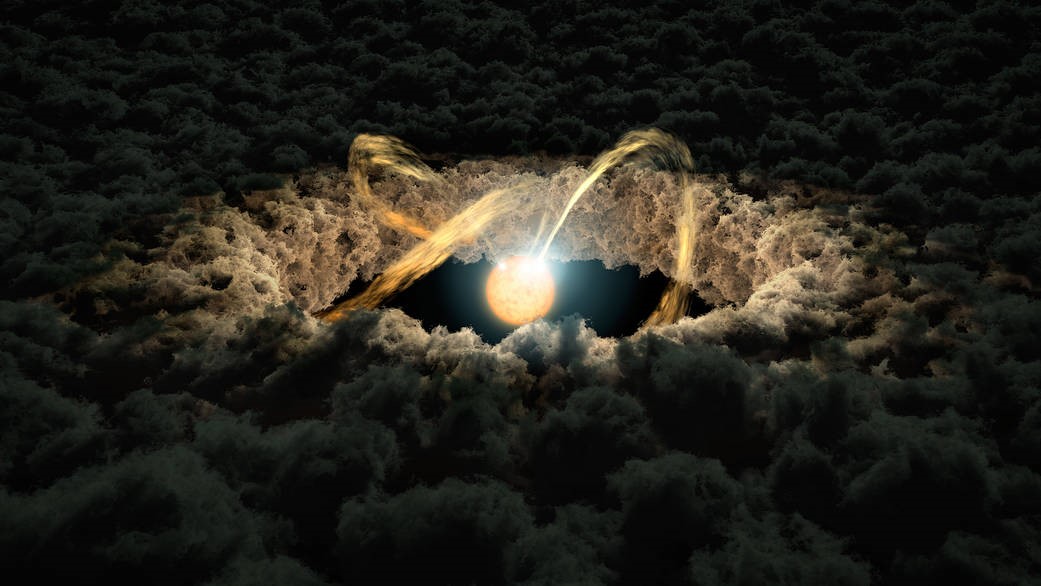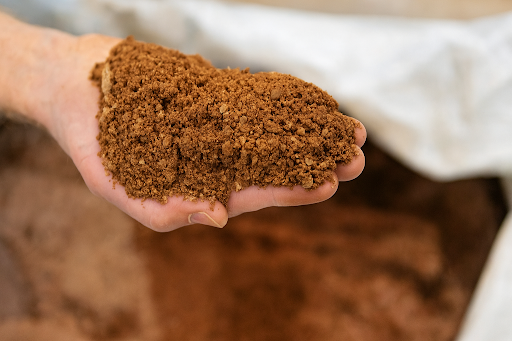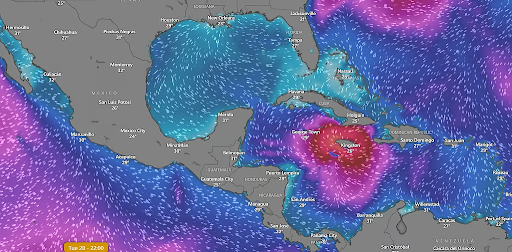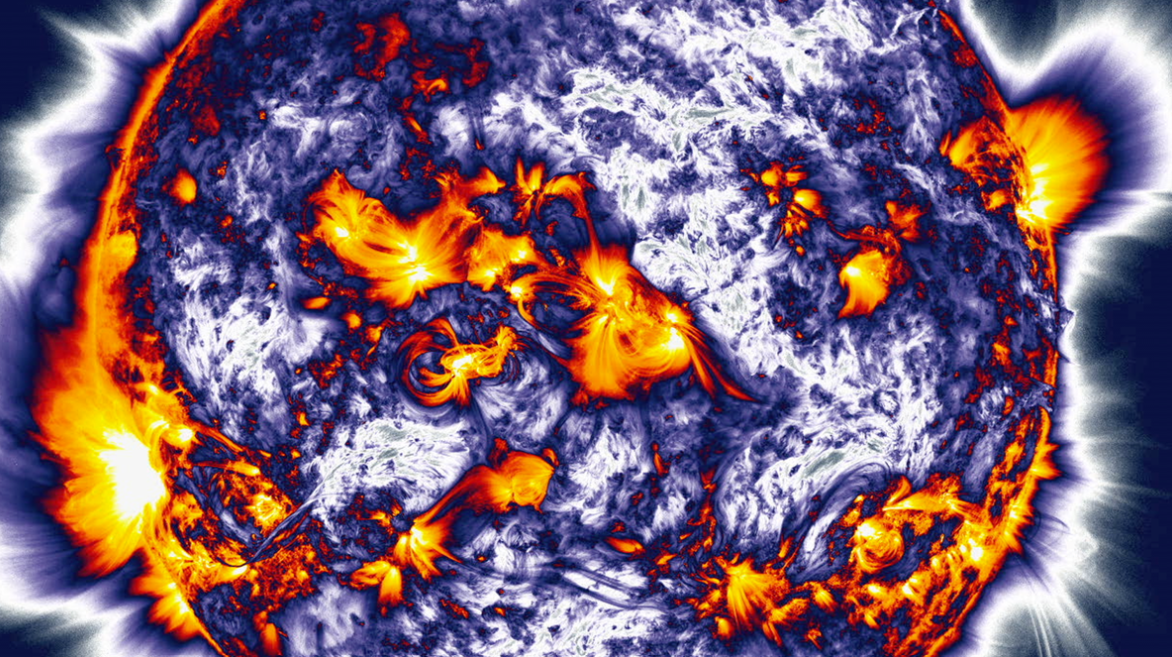Description

Disclaimer: Copyright infringement not intended
Context
A group of extremely bright stars may be slowly reshaping the Orion Nebula and stopping one of their neighbors from forming planets, new James Webb Space Telescope observations suggest.
Details
OBSERVATIONS
- Observations by the James Webb Space Telescope (JWST) show that a compact disk of gas and dust around a young star in the Orion Nebula is losing massive amounts of hydrogen each year.
- The disk, known as a protoplanetary disk, is the region in which new planets can form, so the loss of significant amounts of material could limit this process.
- This hydrogen loss is being driven by intense ultraviolet (UV) radiation pouring in from a group of massive neighboring stars.
- The UV radiation is so strong that it may be preventing large planets from ever forming in the region, a new study suggests. The findings could shed light on the sway massive stars hold on fledgling planetary systems.
Protoplanetary Disk
- A protoplanetary disk is a circumstellar disk of matter, including gas and dust, from which planets may eventually form or be in the process of forming.
- Disks are common by-products of star formation, and range in mass from 0.001 to 0.3 Solar masses (1027–1029 kg) and in size from several tens to almost 1,000 Astronomical Units (1012–1014 m).
- The existence of such disks was long suspected but was confirmed by direct imaging in 1994 when scientists used the Hubble Space Telescope (HST) to examine newborn stars in the Orion Nebula.
- About half of those were found to be surrounded by disks of gas and dust.

Formation
- Stars form from cold interstellar molecular clouds. A molecular cloud is an interstellar cloud of gas and dust in which molecules can form, the most common of which is hydrogen (H2).
- As they collapse into protostars under the force of gravity, the remaining matter forms a spinning disk. Eventually, the star stops accreting matter, leaving the disk in orbit around it.
- The leftover gas and dust inside that protoplanetary disk become the ingredients for planet formation.
- Organic molecules present in the original molecular cloud become part of the protoplanetary disk and the planets that form from it.
- The chemical composition of the protoplanetary disk determines the composition of the eventual planets that form from it.
- Protoplanetary disks typically disperse after 2–3 million years through the coalescence of their matter into planets and photoevaporation by the stellar radiation.
Ultraviolent stars and the recent developments
- Stars in the Trapezium cluster — a crowded home of many young stars, including the well-known group at Orion's heart — are each about 10 times more massive than our sun and 100,000 times brighter.
- The new JWST observations show that UV radiation from these ultra-bright stars is significantly heating up gas in the nearby protoplanetary disk, formally named d203-506, causing loads of valuable planet-forming material to break free and blow off into space.
- The disk d203-506 is at most a few million years old, although it's difficult to obtain a precise age. The Orion Nebula itself is believed to be roughly 3 million years old.
- The nascent nebula is about 30 to 40 light-years in diameter, so there is a good chance that the gas being ejected from the protoplanetary disk remains within it — although it's forever lost for any future planets that would sprout in the disk itself. It appears this system is also losing entire oceans' worth of water every month from the ultraviolet assault
- The gas puffing away from the disk is carrying with it at least some dust grains, so it's an open question whether rocky planets like Earth can ever birth in this system.
- Studies of meteorites show that our own solar system, which is 4,000 times older than d203-506, was also influenced by one or more nearby massive stars during its formation. Evidence for this includes the presence of radioactive elements in comets and asteroids — such as aluminum-26, which is known to form in very hot conditions like those seen in exploding stars — that may have wafted into our solar system thanks to a closeby supernova.
|
PRACTICE QUESTION
James Webb Space Telescope (JWST) was built by collaboration between NASA and which of the following space agency?
- JAXA
- European Space Agency
- ROSCOSMOS
- ISRO
Answer B
|










